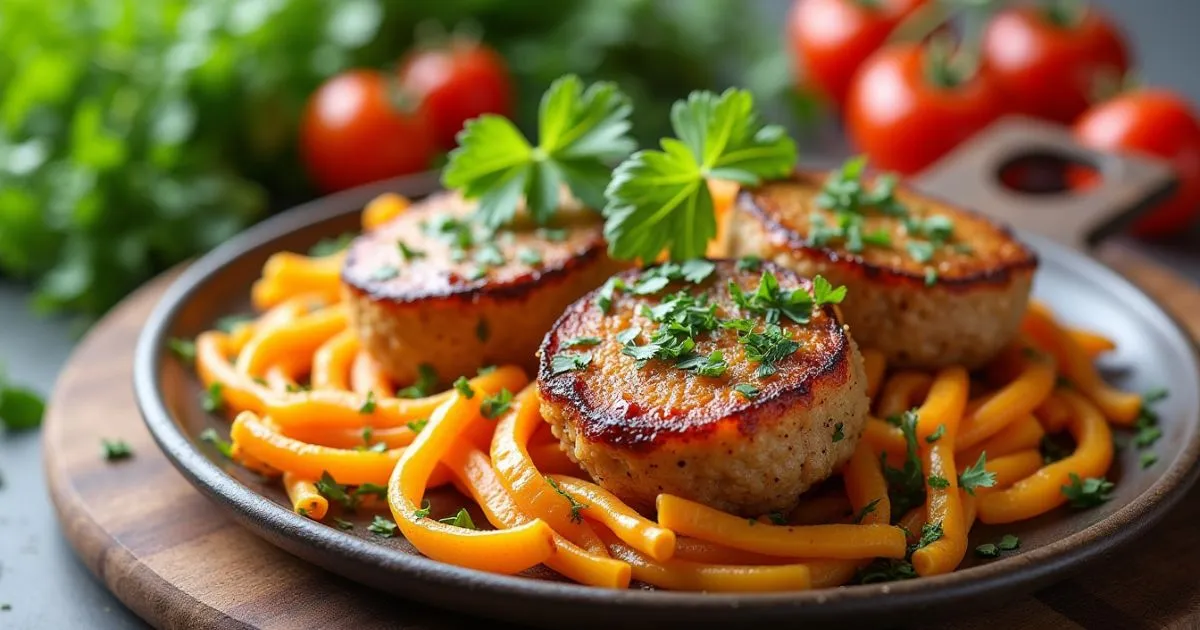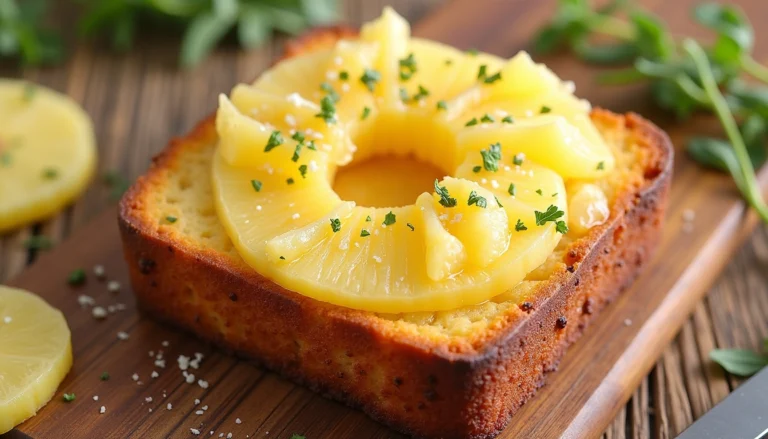30 High Protein Vegetarian Meals That Will Transform Your Plant-Based Diet (2025 Guide)
Picture this: you’ve just finished an intense workout session, and your body craves nourishment. Your stomach rumbles with hunger, yet you’re committed to maintaining your vegetarian lifestyle. Does this scenario sound familiar? Perhaps you’ve wondered whether plant-based eating truly provides adequate protein for your active lifestyle, or maybe you’ve experienced that nagging concern about muscle maintenance without meat.
Here’s what countless vegetarians discover: the belief that plant-based diets lack sufficient protein is nothing more than an outdated misconception. Professional athletes, bodybuilders, and fitness enthusiasts worldwide thrive on vegetarian diets packed with protein-rich meals that satisfy both nutritional needs and taste preferences. Your journey toward optimal health doesn’t require sacrificing your values or your gains.
Today, you’ll discover 30 incredible high protein vegetarian meals that will revolutionize your approach to plant-based nutrition. These recipes don’t just meet protein requirements—they exceed expectations while delivering flavors that make every bite memorable.
Table of Contents
Why High Protein Vegetarian Meals Are Essential for Your Health
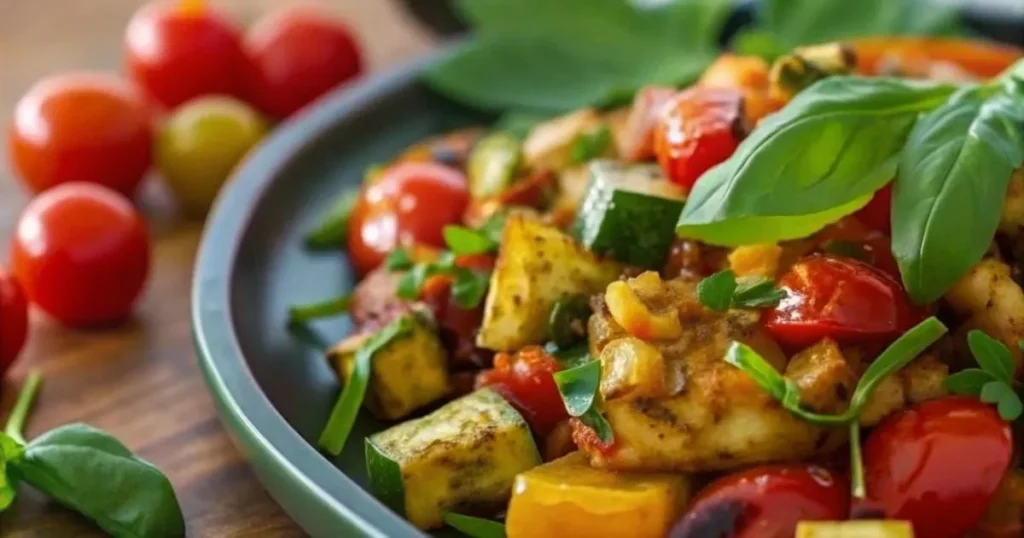
Understanding Your Protein Requirements
Your body requires protein for countless functions: muscle repair, immune system support, hormone production, and cellular maintenance. The recommended daily intake varies based on your activity level and goals. Sedentary individuals need approximately 0.8 grams per kilogram of body weight, while active people require 1.2 to 2.0 grams per kilogram.
For a 150-pound person, this translates to 55-120 grams daily. The beauty of high protein vegetarian meals lies in their ability to meet these requirements while providing additional nutrients that meat-based dishes often lack.
Complete vs. Incomplete Proteins Simplified
You’ve probably heard about “complete” proteins containing all nine essential amino acids. While animal products naturally provide complete proteins, plant-based sources can achieve the same result through strategic combinations. The good news? You don’t need perfect protein combinations at every meal. Your body pools amino acids throughout the day, making variety your best strategy.
Quinoa, hemp seeds, and soy products like tofu and tempeh naturally contain complete amino acid profiles. Other plant proteins become complete when paired thoughtfully—think rice and beans, or peanut butter on whole grain bread.
Health Benefits Beyond Protein
High protein vegetarian meals offer advantages that extend far beyond muscle building:
Cardiovascular Health: Plant-based proteins typically contain less saturated fat and zero cholesterol, supporting heart health while providing essential nutrients.
Digestive Wellness: The fiber content in vegetarian protein sources promotes healthy digestion and feeds beneficial gut bacteria, creating a thriving microbiome.
Weight Management: Protein combined with fiber increases satiety, helping you feel full longer while naturally managing caloric intake.
Environmental Impact: Your protein choices contribute to reduced carbon footprint and more sustainable food systems.
Essential High Protein Ingredients for Your Kitchen
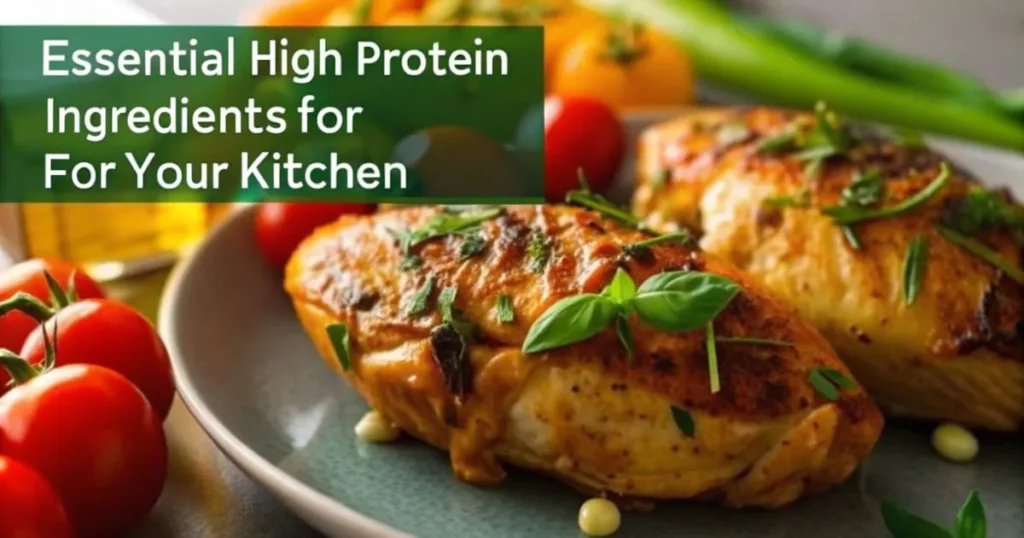
Legumes and Beans: Your Protein Foundation
Stock your pantry with these protein powerhouses that form the backbone of satisfying vegetarian meals:
- Lentils: 18 grams protein per cooked cup, plus iron and folate
- Chickpeas: 15 grams protein per cooked cup, versatile for salads, curries, and roasting
- Black beans: 15 grams protein per cooked cup, perfect for Mexican-inspired dishes
- Edamame: 17 grams protein per cup, ideal for quick snacks and stir-fries
Soy-Based Protein Champions
Tofu delivers 20 grams of protein per cup and absorbs flavors beautifully. Choose firm varieties for stir-fries and scrambles, silken for smoothies and desserts.
Tempeh provides an impressive 31 grams of protein per cup. This fermented soybean product offers probiotics alongside protein, making it a nutritional superstar.
Seeds and Grains for Complete Nutrition
Quinoa stands out among grains with 8 grams of complete protein per cooked cup. Use it as a rice substitute or breakfast base.
Hemp seeds pack 10 grams of protein into just 3 tablespoons, plus healthy omega-3 fatty acids. Sprinkle them on salads, yogurt, or smoothie bowls.
Chia seeds contribute 5 grams of protein per 2 tablespoons while providing fiber and calcium. They create perfect pudding bases and smoothie thickeners.
10 Irresistible High Protein Vegetarian Meals to Start Your Journey
1. Mediterranean Chickpea Power Bowl
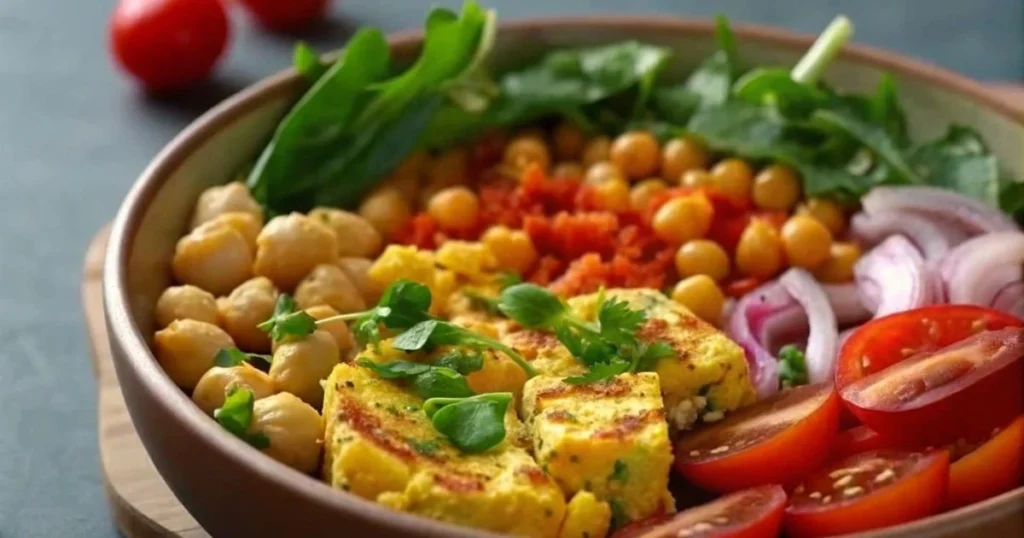
| Ingredient | Amount | Protein (g) | Calories |
|---|---|---|---|
| Chickpeas (canned) | 1 cup | 15 | 269 |
| Feta cheese | 2 oz | 8 | 150 |
| Hemp seeds | 2 tbsp | 7 | 113 |
| Tahini dressing | 2 tbsp | 5 | 120 |
| Total | – | 35 | 652 |
Combine drained chickpeas with crumbled feta, diced cucumber, cherry tomatoes, and red onion. Whisk tahini with lemon juice, garlic, and water for the dressing. Top with hemp seeds for extra protein and healthy fats.
2. Protein-Packed Quinoa Breakfast Bowl
Transform your mornings with this nutritional powerhouse:
| Ingredient | Amount | Protein (g) | Calories |
|---|---|---|---|
| Cooked quinoa | 1 cup | 8 | 222 |
| Greek yogurt | ½ cup | 10 | 100 |
| Almond butter | 2 tbsp | 8 | 190 |
| Chia seeds | 1 tbsp | 3 | 60 |
| Total | – | 29 | 572 |
Cook quinoa in advance and store in your refrigerator. Layer warm quinoa with Greek yogurt, drizzle almond butter on top, and finish with chia seeds and fresh berries.
3. Stuffed Bell Peppers with Lentils and Quinoa
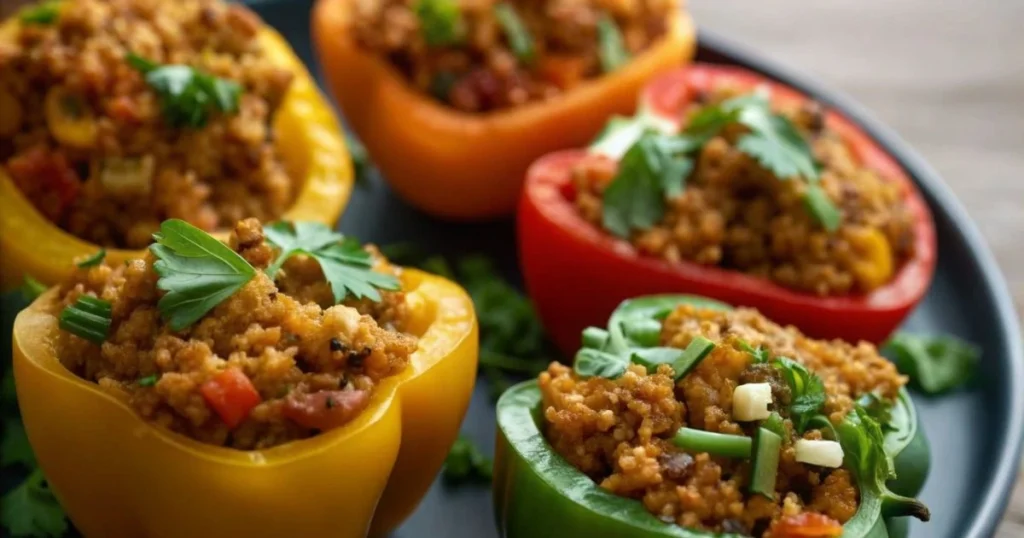
| Ingredient | Amount | Protein (g) | Calories |
|---|---|---|---|
| Cooked lentils | ¾ cup | 13 | 169 |
| Cooked quinoa | ½ cup | 4 | 111 |
| Mozzarella cheese | ¼ cup | 8 | 80 |
| Nutritional yeast | 2 tbsp | 8 | 60 |
| Total | – | 33 | 420 |
Hollow out bell peppers and stuff with a mixture of cooked lentils, quinoa, diced vegetables, and cheese. Bake until peppers are tender and filling is heated through.
4. Thai Peanut Tempeh Stir-Fry
Crumble tempeh and sauté with vegetables in a sauce made from peanut butter, soy sauce, lime juice, and sriracha. Serve over brown rice for a complete meal delivering 28 grams of protein.
5. Black Bean and Sweet Potato Enchiladas
Roast cubed sweet potatoes and combine with black beans, onions, and spices. Roll in whole wheat tortillas, top with cheese and enchilada sauce, then bake until bubbly. Each serving provides 20 grams of protein.
6. High-Protein Veggie Burger
Blend cooked lentils, quinoa, and vegetables with binding ingredients like flax eggs. Form into patties and cook until crispy outside, tender inside. These burgers deliver 26 grams of protein per serving.
7. Chickpea Tikka Masala
Simmer chickpeas in a creamy tomato-based sauce with Indian spices. Serve over quinoa or brown rice for a satisfying meal with 24 grams of protein.
8. Tofu Scramble with Nutritional Yeast
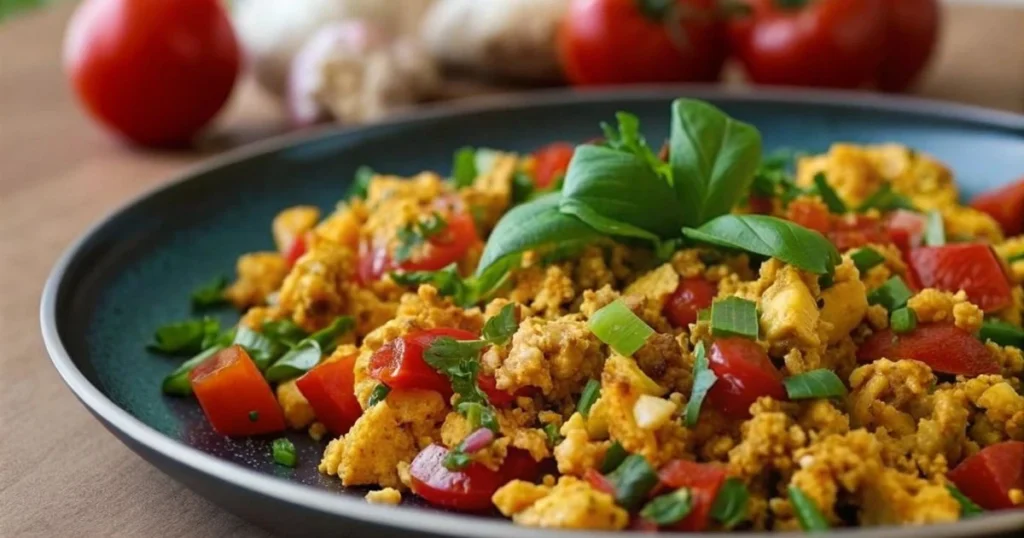
Crumble firm tofu and sauté with vegetables, turmeric, and nutritional yeast for a scrambled egg alternative. This breakfast favorite provides 25 grams of protein.
9. Three-Bean Chili
Combine kidney beans, black beans, and pinto beans with vegetables and spices for a hearty chili delivering 21 grams of protein per serving.
10. Greek Lentil Soup
Cook red lentils with vegetables, herbs, and vegetable broth for a comforting soup that provides 20 grams of protein per bowl.
Meal Prep Strategies for Success
Your Weekly Preparation Blueprint
Dedicate 2 hours on Sunday to batch preparation:
Step 1: Cook grains in large quantities. Prepare quinoa, brown rice, and farro for the week ahead.
Step 2: Prepare protein sources. Cook a large pot of lentils, roast chickpeas with spices, and press tofu for marinating.
Step 3: Wash and chop vegetables. Store them in clear containers for easy meal assembly.
Step 4: Prepare versatile sauces and dressings. Tahini dressing, pesto, and marinara sauce enhance multiple meals.
Storage Solutions That Work
Invest in glass containers with tight-fitting lids. Separate wet and dry ingredients to maintain freshness. Freeze individual portions of cooked grains and legumes for quick meals.
Budget-Friendly High Protein Options
Cost-Effective Protein Sources
| Protein Source | Cost per 10g Protein | Shelf Life | Versatility |
|---|---|---|---|
| Dried lentils | $0.15 | 2-3 years | Excellent |
| Canned chickpeas | $0.25 | 2-5 years | Very good |
| Tofu | $0.35 | 1 week | Excellent |
| Eggs | $0.40 | 3-5 weeks | Very good |
Dried legumes offer the best value, while canned varieties provide convenience. Buy tofu in bulk and freeze portions for extended storage.
Weekly Menu Under $50
Plan meals around affordable proteins like lentils, beans, and eggs. Supplement with seasonal vegetables and sale items. Batch cooking reduces both time and costs while ensuring you always have healthy options available.
Common Mistakes to Avoid
Protein Combining Myths
You don’t need to stress about combining proteins at every meal. Eating a variety of plant proteins throughout the day naturally provides all essential amino acids. Traditional combinations like rice and beans work well, but they’re not mandatory for adequate nutrition.
Nutrient Absorption Tips
Enhance iron absorption by pairing iron-rich foods with vitamin C sources. Add bell peppers to lentil dishes or squeeze lemon over spinach salads. Consider B12 supplementation, as this vitamin is primarily found in animal products.
Frequently Asked Questions About High Protein Vegetarian Meals
How much protein do I need from high protein vegetarian meals daily? Your individual needs depend on weight, activity level, and goals. Most adults require 0.8-1.2 grams per kilogram of body weight. Active individuals and those building muscle may need 1.6-2.0 grams per kilogram.
Can high protein vegetarian meals support muscle building? Absolutely! Research shows plant-based proteins effectively support muscle protein synthesis when consumed in adequate amounts. Focus on getting 20-30 grams of protein per meal, especially after workouts.
Are high protein vegetarian meals suitable for weight loss? Yes! These meals often contain fewer calories and more fiber than meat-based alternatives, promoting satiety while supporting weight management goals.
What about protein quality in vegetarian sources? Many plant proteins are complete, including quinoa, hemp seeds, and soy products. Others become complete when combined with complementary proteins throughout the day.
How do I ensure I’m getting enough protein as a vegetarian? Track your intake initially to understand your patterns. Aim to include a protein source at each meal and snack. Variety ensures you’re getting all essential amino acids.
Your Path Forward
High protein vegetarian meals represent more than dietary choices—they’re investments in your health, environmental sustainability, and culinary exploration. These 30 recipes and strategies provide everything needed to create satisfying, protein-rich meals that support your goals while delighting your taste buds.
Success with vegetarian eating lies in preparation, variety, and understanding that plant-based nutrition can be just as robust as any other dietary approach. Start with 2-3 recipes that excite you most, build your pantry with versatile protein sources, and gradually expand your repertoire.
Every high protein vegetarian meal you choose contributes to better health outcomes while reducing environmental impact. Your body will respond positively to this nutritional approach, and you’ll discover flavors and textures that may surprise you.
Ready to transform your relationship with vegetarian protein? Begin today by preparing the Mediterranean Chickpea Power Bowl recipe above. Share your experience and favorite discoveries in the comments below—your journey might inspire someone else to embrace this healthful, sustainable way of eating.
Did You Try Our Recipe ?
There are no reviews yet. Be the first one to write one.

